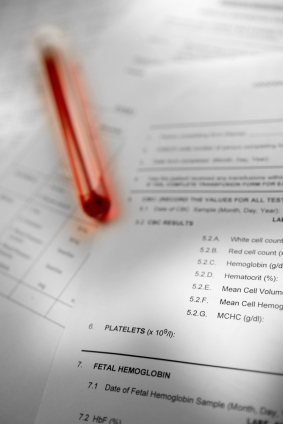Testing for Hemophilia

The only way to detect Hemophilia is through a blood test to measure the clotting factor level. If Hemophilia is known to run in a family, newborn babies should be tested.
You can test for Hemophilia A and B when a baby is born. The blood can be drawn from the umbilical cord. The exact level from the cord blood may not reflect the severity in the baby but it can indicate whether there is Hemophilia or not. Additionally, the factor IX level in a newborn baby is slightly lower than it will be later in life. Repeating the test at 6 to 12 months of age can show the factor IX level a person can expect to have the rest of their life. For example, it is normal for a newborn baby to have a factor IX level of 30% thus in a baby with a family history of mild Hemophilia B, retesting may be needed to confirm the diagnosis.
Can you tell if a baby has hemophilia before it is born?
Another test is called CVS (chorionic villus sampling). In CVS, the doctor removes a small sample of cells from the placenta. A DNA test is done on the sample. It can show the sex of the baby and check for Hemophilia. This test can be done earlier than other tests. It is typically done in the 10th to 13th week of pregnancy. It takes about ten days to get the results. With CVS, there is about a 1 in 100 chance of having a miscarriage. If done before 10 weeks of pregnancy, there is a risk of causing birth defects.
Another way of testing for hemophilia is PUBS (percutaneous umbilical blood sampling). PUBS directly tests the blood of the unborn baby. It is done after the 20th week of pregnancy. The doctor takes blood from the umbilical vein which runs from the baby to the placenta. The test results are ready in just a few days. PUBS is usually done after other tests have shown that the baby is a boy. This test does not work for all types and levels of hemophilia.
Special Precautions
Some couples with family histories of Hemophilia may use the knowledge of the baby’s sex to prepare themselves for the child’s potential health problems. The person delivering the baby should not use forceps or vacuum suction if the baby might have Hemophilia (this includes during vaginal and C-section). Additionally, they should avoid using monitors placed in the baby’s scalp (fetal scalp electrodes), often used to monitor the baby’s heart rate for distress. The fetal scalp electrodes can lead to extracranial hemorrhage or bleeding in the baby’s scalp and the forceps and vacuum extractor can lead to intracranial hemorrhage or bleeding in and around the brain.
